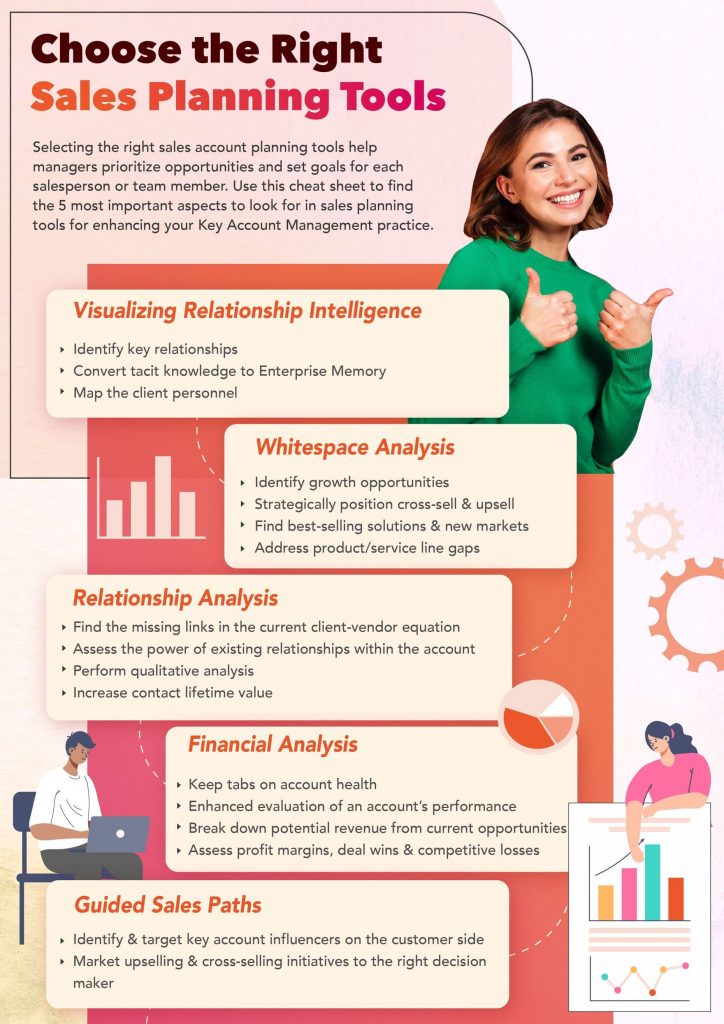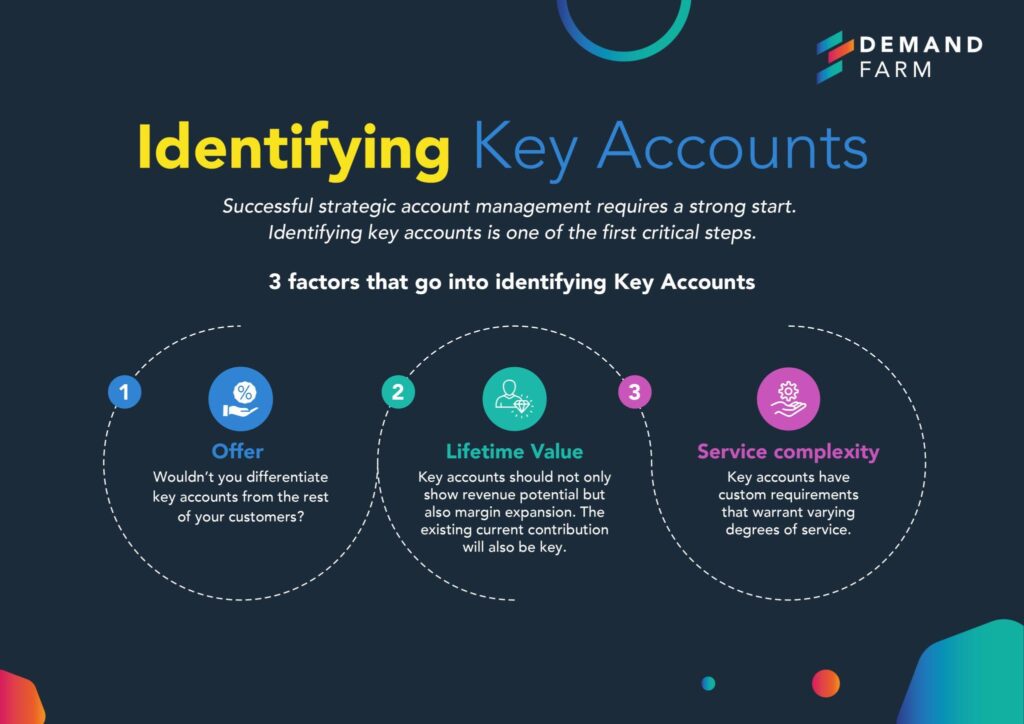In the world of B2B software, having large technology companies as key clients is critical for growth and success. However, supporting and fostering these accounts requires a strategic and dynamic approach. Traditionally, account plans were created once a year and reviewed by the executive team. However, in today’s dynamic business environment, plans change quickly, and regular updates are necessary. This is where digital key account management comes in. Digital key account management provides several benefits over traditional account planning: it is dynamic and flexible, allowing for quick updates and changes. It provides a step-by-step approach to account planning, ensuring all account owners use the same approach. With digital key account management tools, employees can share information across the organization easily, ensuring everyone is aligned and up to date.
Watch Now: Insights on Digital Key Account Management by David Shen, Head of Revenue Operations at Cambridge Mobile Telematics
Factors to Consider While Adopting Digital Key Account Management
As businesses continue to adapt to the digital world, one aspect that needs to be considered is key accounts and how they are managed. Shifting towards digital key account management is becoming increasingly essential, especially in sales. With B2B software sales moving majorly digital due to the pandemic, organizations need to identify the need to adopt a digital approach to key account management that is tailored to deal with large businesses that come with large buying committees. It is no longer just a matter of someone coming to the vendor asking for the tool. Now, sales teams must go outbound and convince people within that business to buy their product. This requires a different selling motion, and getting buying across the whole group is now a requirement.
Digital Account Management Masterclass by Pawanjeet Singh – AVP & Head of Sales at DemandFarm
To make this process easier and more organized, businesses need a solution that integrates well with their existing tech stack. It should be easy to use and represent the parent and child customer structure accurately. The software should be visual and easy to navigate, making it easier for sales teams to learn new muscles. It should also be able to provide comprehensive views of all data and not have little islands of data scattered around. It also provides other teams within the organization, such as customer success, BDRs, and ABM teams, access to this data. This means that the software chosen for digital key account management must be accessible to everyone within the organization. To make the transition smoother, businesses should consider software solutions that integrate well with their existing tech stack, accurately represent their customer structure, and provide a comprehensive view of all data. By choosing the right software, businesses can streamline their sales process and make it easier for everyone within the organization to access the data they need.

Challenges in Adopting Digital Key Account Management
As businesses continue to embrace the digital age, many are finding that adopting digital key account management tools can help them streamline their operations, increase efficiency and effectiveness, and ultimately drive better results. However, like any new technology or process, there are challenges that come with adopting these tools. The following are some factors to consider when making this shift:
- Maturity level and discipline: Is your organization ready to leverage a digital tool, and do you have the discipline to use it effectively?
- Executive buy-in: Do you have the support of the executive team to ensure adoption across the organization?
- Account complexity: Are your accounts growing in complexity, and do you need a strategic view to manage them effectively?
- Business transition: Are your clients going through a transition, and do you need to keep a dynamic planning approach to stay aligned with their changing needs?
- Team transformation: Do you have the right team to drive the transformation, and do you have champions who can lead the adoption process?
- Integration and training: Have you integrated the digital tool into your existing processes, and have you provided the necessary training and support to ensure successful adoption?
Follow & Listen to: The Shift Podcast on Digital Key Account Management
One of the biggest challenges businesses face when adopting digital key account management tools is ensuring that these tools do not detract from customer or client interactions. It is essential to ensure that these tools add value and do not add more internal steps or processes that pull the account team away from building relationships with clients. Therefore, it is crucial to think through the transition process and assess the impact of these tools on client face time. By doing so, businesses can ensure that they are not only adding value but also maintaining strong relationships with their clients. Many businesses have other corporate tools and systems in place that these tools need to integrate with. This can be particularly challenging when it comes to financial tools, as revenue tracking against plans and budgets for the year is essential. Therefore, it is crucial to ensure that these tools integrate seamlessly with other systems and that any changes or updates do not cause undue disruption.
Ensuring that the tool aligns with the requirements of the organization. Every organization has its processes and terminology, which can differ from the standard used by the industry. To overcome this, organizations should work to ensure that the tool’s requirements are aligned with the organization’s needs – this can be as simple as remaining fields to make sense to its users. This ensures that there are no misunderstandings that can cause naysayers to reject the tool.
Training is another challenge that businesses face when implementing digital key account management tools. It is essential to ensure that everyone is trained properly and understands how to use the tools effectively. However, lengthy training sessions can be time-consuming and may not be the most effective approach. Instead, businesses can consider rolling out training over a more extended period, with shorter, more focused training sessions. This allows individuals to try out the tool, ask questions, and get feedback in real-time.
Leadership and accountability are critical when it comes to adopting digital key account management tools. If leadership is not driving the adoption of these tools, some individuals may not use them to their full potential. Therefore, it is essential to inspect and expect individuals to use these tools effectively. It is also important to identify early adopters and provide them with the necessary support to help them lead the way and demonstrate the value of these tools. Without leadership support, it can be challenging to get the necessary resources and cooperation to implement these tools effectively. Organizations can build a core team of advocates that will help with implementation and champion the benefits of the solution. These advocates can act as gurus, answering questions and providing guidance to other team members. Having this team of advocates test and try out things before rolling out the tool to the organization is crucial.
Advantages of Adopting Digital Key Account Management
The benefits of digital key account management tools are significant. From improved consistency, format, and content in sales team performances, organizations can plan opportunities and see improvements in a lot of areas (including revenue). By using tools that provide a straightforward and easy-to-understand way of organizing and sharing information, team members can easily update information and ensure that everyone is on the same page.
- Accountability: Digital key account management tools provide an easy way to drive accountability by allowing team members to ask questions about clients, relationships, buyers, decision-makers, white space, and action plans. This ensures that everyone is accountable and focused on achieving the same goals.
- Consistent communication: Using digital key account management tools allow organizations to see who they are meeting within the client organization, their breadth and depth within those groups, and if they need anything more. This feature is particularly useful for complex organizations that have many meetings with clients.
- Delegating tasks: When sales teams are on the same page and routine tasks are automated, it becomes easy for team members to combine forces. Selling is not a solo sport and that it requires the support of the organization to be successful. Tools that enable team members to assign tasks to other members of the team or the organization, ensure that everyone is working together to achieve the same goals.
Sales teams should focus on gaining leadership support, ensuring that the tool aligns with their requirements, and building a core team of advocates to help with implementation. By doing so, they can leverage the benefits of these tools, including improved consistency, accountability, and the ability to assign tasks to others. In today’s digital age, the adoption of digital key account management tools is essential for any organization that wants to stay competitive and drive growth.
Enabling the Shift Towards Digital Key Account Management
The traditional method of key account management is gradually being replaced by digital key account management, which is more efficient, secure, and cost-effective. However, many organizations are struggling to make the shift towards digital key management. The process involves various factors such as selecting a vendor, choosing the right technology, and ensuring that the entire team is on board with the transition.
- Get the buy in: The first and foremost step towards making the shift is to involve the whole enterprise team in the decision-making process. This ensures that everyone understands the importance of the change and feels a part of the decision. The process should start with evaluating different vendors and technologies, and then engaging the team in selecting the right one. This way, the team feels responsible for the decision, and it is not something that is being done to them.
- Select key accounts based on data: During the selection process, it is crucial to keep the team informed and updated about the progress. This can be done by having regular team meetings and discussing the pros and cons of different options. It is also essential to involve different departments and stakeholders to get a holistic understanding of the organization’s needs.

- Training and learning: Once the selection process is complete, it is crucial to ensure that the team is trained on how to use the new system. This involves providing training sessions, creating user manuals, and offering ongoing support. It is also essential to have a system in place to track the team’s progress and address any issues that may arise.
- Recognition: Another essential factor in making the shift towards digital key account management is to recognize and appreciate the team’s efforts. If someone has done a great job of documenting and understanding the organizational structure, it should be recognized and shared with the team. This helps to create a culture of appreciation and encourages the team to put in their best efforts.
- Leading from the front: It is crucial for the leadership team to get engaged with the shift towards digital key account management. When leaders prioritize the transition, the team realizes the importance of the change and is more likely to be committed to it. It is essential to communicate the significance of the shift, its benefits, and how it aligns with the organization’s goals.
The shift towards digital key account management enhances efficiency and cost-effectiveness in organizations. However, making the transition can be challenging, especially if the team is not on board. By involving the whole team in the relationship mapping and decision-making processes, keeping them informed and updated, providing training and support, recognizing and appreciating their efforts, and by having an engaging leadership team, organizations can successfully make the shift towards digital key account management.
Conclusion
Organizations can find the process of adopting digital key account management tools challenging, but with careful planning and execution, they can reap the benefits. By ensuring that these tools add value, integrating them seamlessly with other systems, providing effective training, and holding individuals accountable, businesses can streamline their operations, increase efficiency and effectiveness, and ultimately drive better results. Adopting digital key account management is a critical step for B2B software companies that want to support and foster their key clients effectively. However, this shift requires careful consideration of factors and a disciplined approach to ensure successful adoption. By doing so, companies can stay aligned with their clients’ changing needs and continue to grow and succeed in today’s dynamic business environment.
 On-Demand Webinar: Unfiltered take on AI in Account Planning: Meet DemandFarm’s KAM AI
On-Demand Webinar: Unfiltered take on AI in Account Planning: Meet DemandFarm’s KAM AI 


